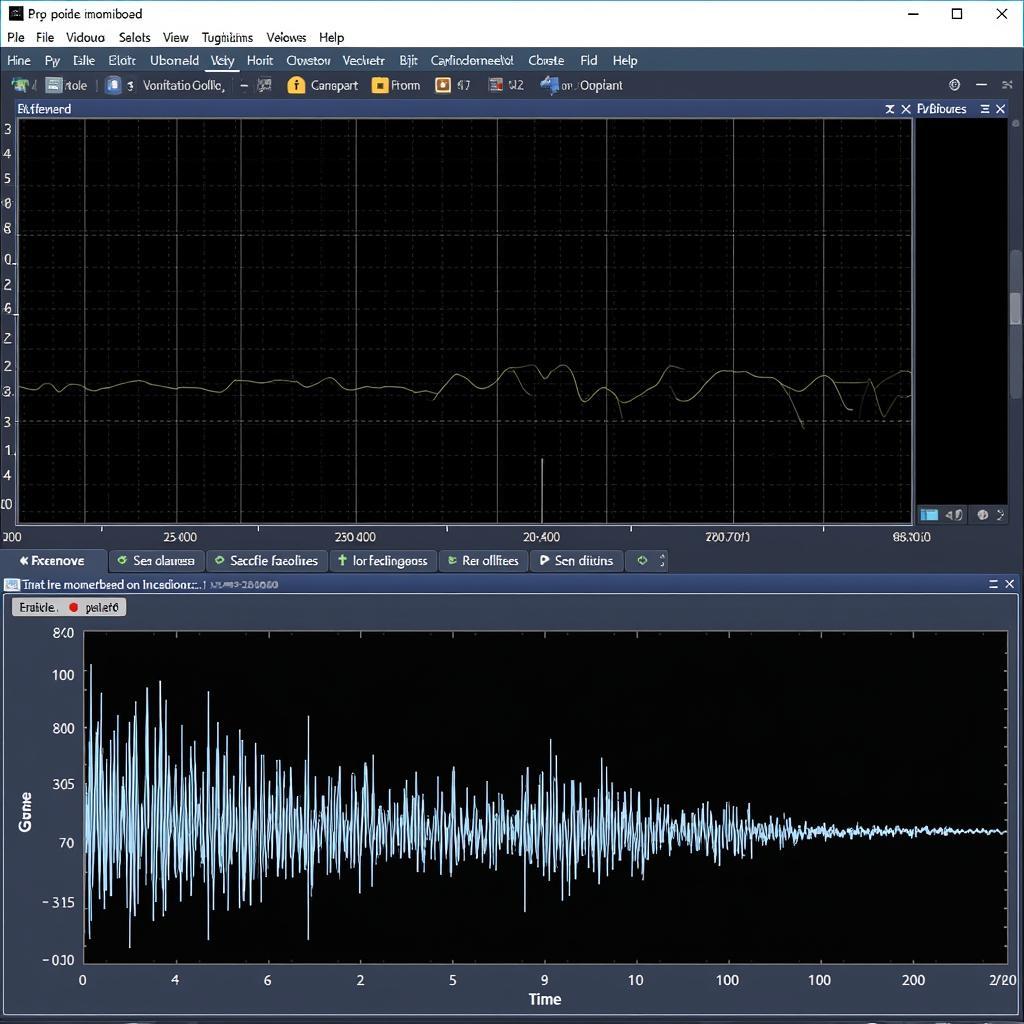The pursuit of paranormal phenomena often leads researchers down a path shrouded in mystery and ambiguity. While qualitative research, with its emphasis on personal experiences and subjective interpretations, has long been a cornerstone of the field, there’s a growing movement towards a more data-driven approach. This is where Quantitative Research Topics come into play, offering a framework for examining the unexplainable through the lens of statistics, measurements, and objective analysis.
Can We Quantify the Paranormal?
The inherent challenge in applying quantitative research to the paranormal lies in its very nature. How do you measure something that seemingly defies the laws of physics or quantify experiences that are often fleeting and subjective? The answer, while complex, lies in identifying quantifiable aspects within paranormal phenomena.
For instance, instead of trying to measure the “intensity” of a haunting based on personal accounts, researchers might focus on the frequency of specific events, like sudden temperature drops, electromagnetic fluctuations, or the appearance of unexplained sounds. These quantifiable elements provide a foundation for statistical analysis, enabling researchers to identify patterns and anomalies that could suggest a paranormal presence.
Exploring Quantitative Research Topics in the Paranormal
The realm of paranormal research offers a diverse landscape for quantitative investigation. Here are a few compelling research topics that lend themselves well to this approach:
1. Analyzing EVP Recordings:
Electronic Voice Phenomena (EVP) recordings, often captured during investigations of allegedly haunted locations, present a rich source of data. By converting audio recordings into visual spectrograms, researchers can analyze the frequency, duration, and amplitude of sound waves. This quantitative data can then be compared to known databases of human and environmental sounds to identify potential anomalies that might suggest a paranormal origin.
 Analyzing EVP Recordings using Software
Analyzing EVP Recordings using Software
2. Mapping Electromagnetic Field (EMF) Fluctuations:
EMF meters are commonly used in paranormal investigations to detect fluctuations in electromagnetic fields, often associated with spirit activity. By collecting data on EMF readings at specific locations within a site over time, researchers can create visual maps and charts. These visual representations can reveal patterns and correlations between EMF fluctuations and other reported paranormal occurrences.
3. Investigating Psychokinesis (PK) with Random Number Generators (RNGs):
RNGs produce sequences of random numbers, theoretically free from any predictable patterns. The hypothesis behind PK research suggests that human consciousness might influence these random sequences. By having individuals attempt to mentally influence the output of an RNG, researchers can gather quantitative data on the frequency of hits or deviations from expected probability distributions. Statistical analysis can then determine if the observed results deviate significantly from chance, potentially providing evidence for psychokinesis.
The Importance of Rigorous Methodology
It’s crucial to acknowledge that the application of quantitative research to paranormal phenomena doesn’t guarantee definitive answers. However, by adhering to rigorous scientific methodology, controlling for variables, and employing appropriate statistical analysis, we can begin to shed light on these enigmatic experiences.
Quantitative research, when applied meticulously, offers a powerful tool for exploring the boundaries of our understanding. It allows us to approach the unknown with a discerning eye, seeking patterns and evidence within the seemingly inexplicable.
FAQs about Quantitative Research in Paranormal Investigation
1. Can quantitative research “prove” the existence of ghosts?
Quantitative research, by its very nature, doesn’t aim to “prove” anything. Instead, it seeks to identify patterns and anomalies that might suggest a need for further investigation.
2. What are some challenges in applying quantitative research to the paranormal?
One of the main challenges is isolating variables and controlling for external factors that might influence the results.
3. How can I get involved in quantitative paranormal research?
Many Paranormal Research groups and organizations welcome individuals interested in contributing to their investigations. Look for groups that emphasize scientific methodology and data analysis.
Delving Deeper into the Unknown
If you’re intrigued by the intersection of quantitative research and the paranormal, explore these related topics on our website:
- How to Find a Qualitative Research Article
- Quantitative Research Sociology
- Participant Recruitment in Qualitative Research
The journey into the heart of the paranormal is ongoing. By embracing both qualitative and quantitative research methods, we can continue to chip away at the mysteries that lie beyond our current understanding.
Need help exploring the unexplained?
Contact us:
Phone: 0904826292
Email: research@gmail.com
Address: No. 31, Alley 142/7, P. Phú Viên, Bồ Đề, Long Biên, Hà Nội, Việt Nam.
Our dedicated team is available 24/7 to assist you.